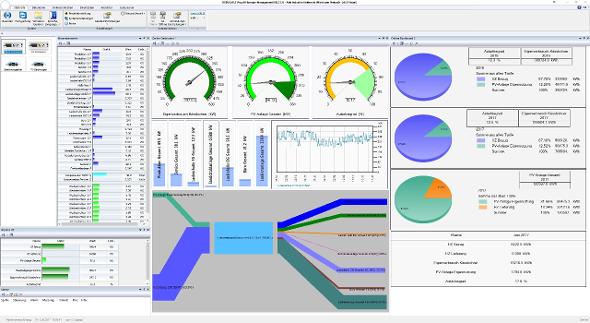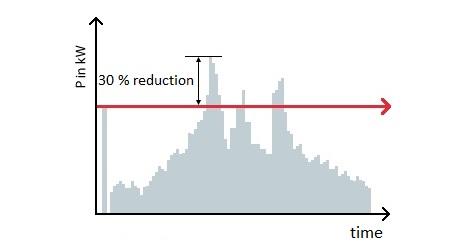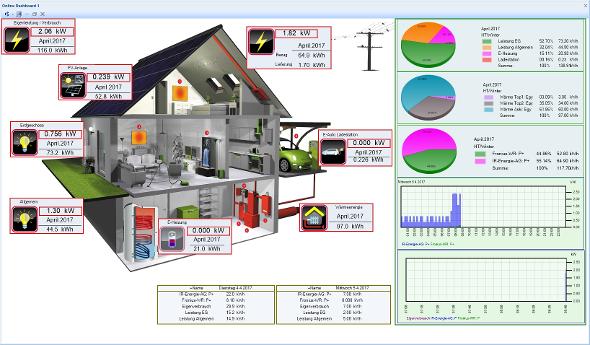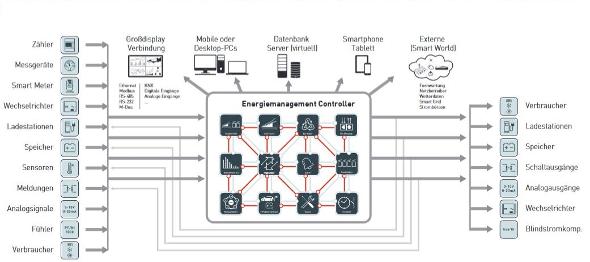Internationale Partnersuche
Innovation & Technologie Angebot
Energy load peak management system for smart control and monitoring in energy grids
Country of Origin: Austria
Reference Number: TOAT20190725002
Publication Date: 25 July 2019
Summary
An Austrian SME developed an energy load management system capable to include all kind of energy supply units, energy consuming units and sensors for smart management and analysis of energy loads in a local or a regional energy grid. The technology enables grid owners and energy providers to reduce investment costs and to increase grid stability by softening of critical energy load peaks. Consumers are enabled to reduce their energy costs. The company is interested in a joint venture agreement.
Description
The Austrian SME is active in the field of energy management in industry and residential buildings since decades. In the past years the company developed a novel energy management system (EMS) and expertise in the field of load management.
I. Problem
The ongoing energy transition is characterised by an increasingly decentralised and acyclic generation and storage of electric energy (e.g. photovoltaic, wind energy, biomass, local battery storage,) and energy consuming units with high energy loads (e.g. e-mobility charging stations, industrial processes). As a consequence, energy load peaks are generated in local (e.g. industrial parks) and regional (e.g. municipal energy networks) energy grids. These peaks are essential cost drivers of the power supply for industry and municipal grids. The avoidance of these peaks is one of the major challenges of the ongoing energy transition and the upcoming e-mobility for energy providers and grid owners.
For avoidance of these energy load peaks in energy grids the energy generating units (e.g. photovoltaic module) do have to communicate with energy consuming units (e.g. e-mobility charging station), storage capacities (e.g. batteries) and sensors and information (e.g. weather data) to adjust current and predictable energy consumption with current or predictable energy generation.
This could lead to energy management as for example via the reduction of the charging current of an e- charging station according to the energy supply or via the activation of air-conditioning units in accordance with the expectable photovoltaic energy supply (weather forecast).
II. State of the art
Existing solutions are capable to manage energy loads of single parts of the overall energy grid. For example, they can adjust the loads of an apartment building with a photovoltaic module, an e-charging station, a smart home and a battery. These existing systems are not able to operate a cross-system energy load management with the capability to manage all relevant energy generation units, energy consumption units and storage units in a defined grid (e.g. an industrial park or a city).
III. USP
1. The developed solution is capable to integrate and manage all (de)centralised energy generating units, energy consuming units, storage units and other information in a regional grid or an industry park.
2. The system is capable to integrate energy generation units, e- charging stations, inverters, energy storage devices, electricity meters and measuring instruments of different manufacturers -> The user is not restricted by the standards of the individual manufacturers.
3. Complex overall optimization algorithm and cascadable electronic building blocks -> scalable from a single-family home to industry and municipalities.
4. A well-practised development team with expertise in the field of measurement and control technology, electrical and network engineering and central building control systems as well as expertise in the world of grid operators and energy suppliers (electricity tariffs).
IV. Application fields
The system enables a scalable business model for smart grid applications:
- from a one-family house to cities (e.g. optimized photovoltaic energy usage)
- from a single company to large scale industry parks
- from a hotel to tourist regions (e.g. skiing region)
- from a single farm to a large agricultural concerns
- from a single store to large shopping chains (solutions across locations)
Within all these application fields the technology can be used to:
- Install, parameterise and administrate a system
- Visualise live data
- Evaluate and analyse data
- Optimize, manage and monitor energy loads in the grid
V. Certifications
The solution fulfils all necessary certifications and requirements of grid-owners.
VI. Partner sought
The company is looking for grid operators, energy suppliers and electrical engineers to expand its business (joint venture agreement).





Advantages and Innovations
Advantages for energy providers and grid owners:
Capability to soften energy load peaks in the grid and to cover the energy demand despite the trend of increasingly decentralised and acyclic generation and storage of electric energy and an increasing number of energy consuming units with high energy loads.
- Reduced number of further power lines needed
- Limited risk of blackouts
- Reduced need for power plants for the generation of peak electricity
Energy providers, grid owners as well as other companies with services in the field of building services engineering and industrial technology with the focus on electrical engineering would be enabled to offer solutions for energy consumers (e.g. residential buildings, cities, industry, hotels, tourist regions, agriculture, …) to save costs by an increased efficiency of energy usage:
1) Cost reduction: Reduction of energy consumption and energy costs. Increasing consumption and efficiency of self-generated energy while reducing decentralized feed-in:
- Up to 25 % less energy costs
- Up to 15 % reduction of energy consumption
- Up to 40 % reduction of energy load peaks
- Up to 100 % increase of the efficiency factor of a photovoltaic module
- Up to 50 % less costs for charging e-cars
2) Efficient integration of new systems in an existing grid as for example efficient integration of e-mobility solutions on-site.
3) Security - Increasing security of supply and costs
4) Increased knowledge about energy consumption on-site
- Generation of data for energy consumption: Analysis, documentation, reporting function
- Development of energy strategies based on the generated data
Stage Of Development
Already on the market
Requested partner
I. Type of partner sought:
The Austrian company is looking for companies interested in this technology to implement energy management solutions in:
- One-family house to cities
- Single companies to large scale industry parks
- Hotels to tourist regions (e.g. skiing regions)
- Single farms to a large agricultural concerns
- Stores to large shopping chains (solutions across locations)
The Austrian company thinks that following company types could be interested in the technology:
- Grid operators and energy suppliers as technology provider for its applications
- Companies with services in the field of building services engineering and industrial technology with the focus on electrical engineering
The multi-language user interface enables companies from various countries to implement the solution with regional end-user.
II. Role of partner sought:
These companies should have:
1) Existing distribution networks
2) Technicians for the installation of the technology on-site
The Austrian company would help to transfer its expertise to qualify software developer in the cooperating company to implement smart load management systems with the developed technology.
The company is currently getting more orders (in specific from Germany) than they can execute with their existing team. The developed technology and expertise can only be patented to a minor extend. Consequently, the company is thinking of a joint venture agreement to manage all these orders and to acquire new projects abroad. Alternatively, the company is also open to transfer shares of its company or to partially merge with other companies.
Cooperation offer ist closed for requests

